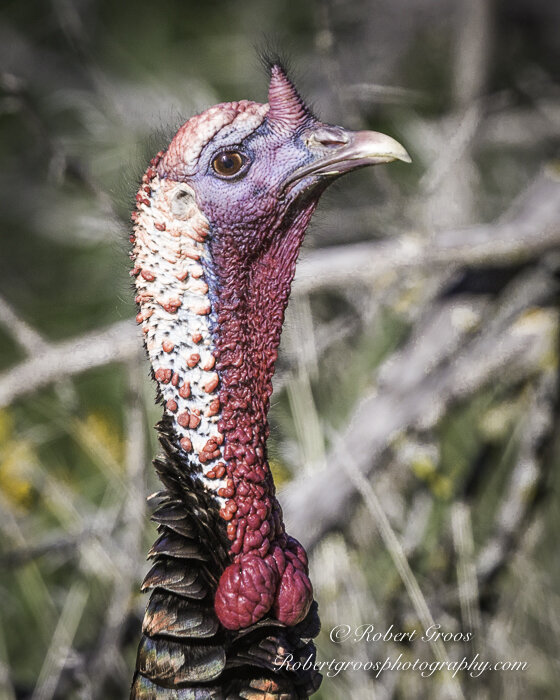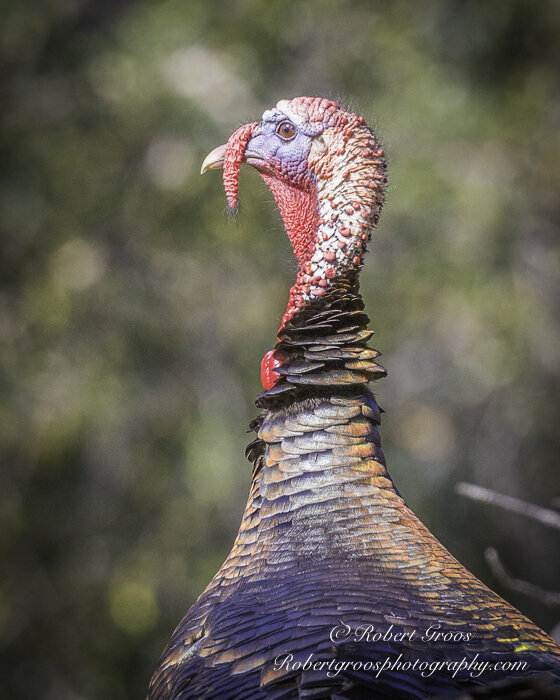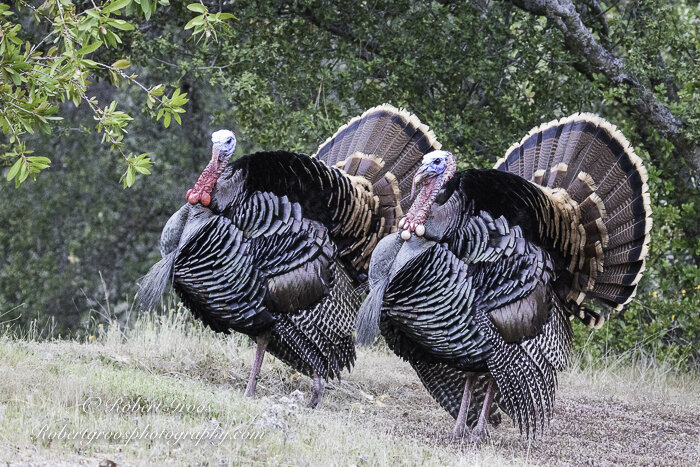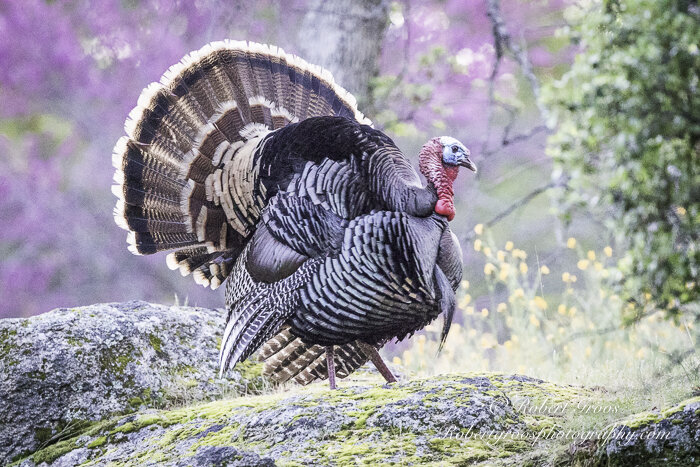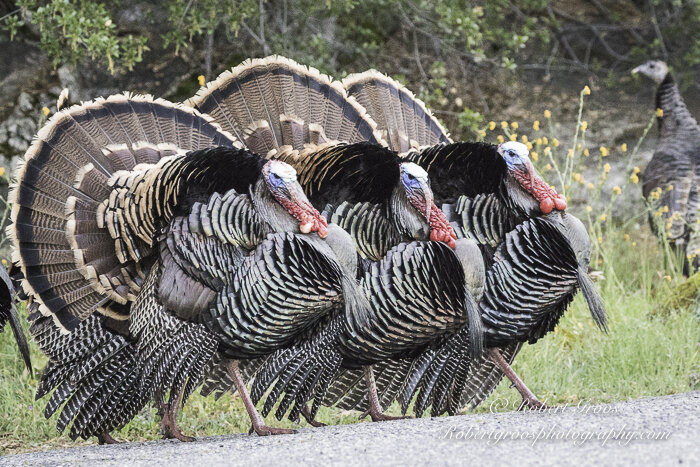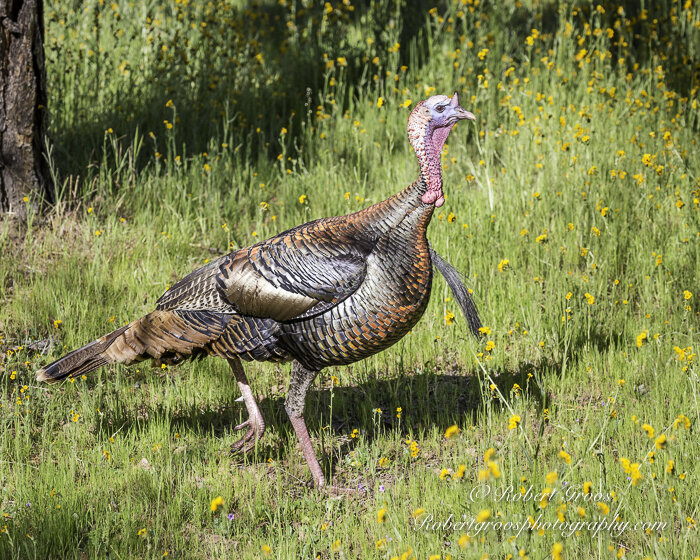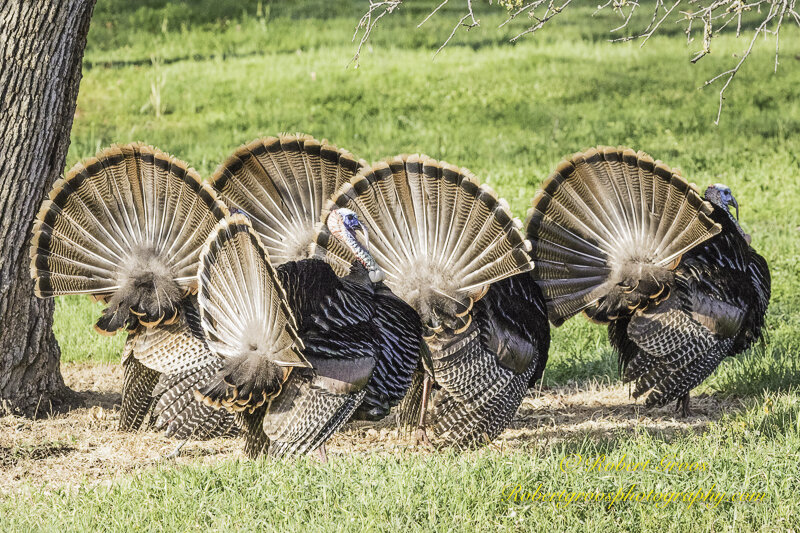Wild Turkeys on parade
Spring is in the air. A man’s fancy turns to basketball tournaments; or fishing; or golf. It’s part of Nature’s plan.
For a Wild Turkey, the story takes a different path. March is mating season. Adult males are on parade, hoping to hook up with one or more willing hens. The pageantry is equally theatrical as it is captivating.
Wild Turkeys parade down street.
Tom turkeys strut about with their tail feathers spread open wide like a deck of cards for prospective hens to admire. With their wing flight feathers fully extended downward, they appear to float smoothly across the ground.
Wild Turkeys strutting.
Gobbling is a key element of male turkey courting behavior. Right now, toms are gobbling up a storm in the morning hours in the oak woodland foothills of the Sierra Nevada where I live. If they gobble in your back yard, forget about sleeping in. The volume can at times be so loud that it is heard up to a mile away.
You might see a group of toms standing shoulder to shoulder, strutting their stuff, with feathers (all 5,000-6,000 of them) puffed out. Suddenly, and in unison, they will thrust their necks forward and emit a chorus of gobbles followed by a moment of silence.
Wild Turkeys gobbling.
Toms begin their chorus of collective gobbles in the twilight before dawn, while still roosting in the trees; they continue throughout the day. It is a jubilant refrain evocative of the Hallelujah Chorus in Handel’s Messiah. I don’t know how tom turkeys manage the choreography, but it certainly is a splendid sight to behold.
Lone tom gobbles for attention of hen.
Wild toms can weigh upwards of twenty-five, even thirty pounds. Clearly, there is a lot of flesh packed under those huge, feather-covered breasts, but we’ll leave that subject for November meal planning. Toms have a cluster of coarse feathers that protrude from the center of the chest. This breast beard, as it is called, is an important adornment: the longer and fuller the beard, the more attractive a potential mate appears.
Tom displaying breast beard.
Tail feathers and breast beard aside, the real bells and whistles (from a hen point of view), are found above the shoulders: specifically, those odd looking appendages on tom’s featherless head and neck. From a human perceptive, those fleshy bumps and loose skin flapping in the breeze certainly make for a bizarre appearance. Nevertheless, these oddities are what puts the hen’s hormones in decision mode.
Caruncles, wart-like bumps of various size on the head and neck, turn a dramatic red when engorged with blood. The snood, another fleshy adornment perched on the lower forehead, might be erect like a cone; or, it might be flaccid, and hang down over the bird’s bill. For a hen, the longer the better. And, of course, there is the wattle, a flap of skin under the chin. Depending upon the bird’s mood, all of these head and neck features may display a dramatic change in color, alternatively red, white, or blue. When aroused, courting toms display a vibrant red and blue, sign of high levels of testosterone.
Toms strut while hens forage.
Hen walks by while tom couples with mate in background.
The day progresses with hens foraging and toms following, gobbling and strutting their stuff in hope of catching the fancy of a hen, any hen probably. Come dusk, turkeys return to their roosts high in the trees. Then, at first light, the pageant begins anew.
Hope springs eternal. Maybe today these toms will find a willing hen with whom to mate.
p.s. If you are not already on my mailing list and wish to be added for future posts, please send an email to: robertgroos1@gmail.com. Your information will not be shared, and you can unsubscribe at anytime. Thank you.


